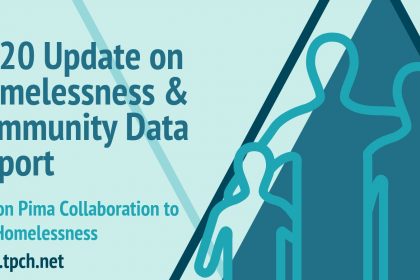|
Tucson Pima Collaboration to End Homelessness has released its first annual update on homelessness and community data report. The 2020 Update on Homelessness provides an overview of multi-year trends in homelessness and the effectiveness of the homeless response system in Tucson and throughout Pima County, Arizona.
It is our hope that this report provides useful information for community leaders, agency decision-makers, and the broader TPCH community regarding the prevalence and experience of homelessness in our region.
Click here to download the report.
Click here to review the recorded webinar presentation of key report findings.
Click here to download the presentation slide deck.
Highlighted Report Findings
Homelessness is on the rise in Pima County. The number of people experiencing homelessness in Pima County on a single night increased by 20.9% from 2019 to 2020 (unsheltered homelessness increased by 60.3%). Dramatic increases are seen in rates of homelessness among people with serious mental illness and others experiencing chronic homelessness.
Maximizing use of the existing homelessness response infrastructure could dramatically reduce unsheltered homelessness. Unoccupied shelter and supportive housing beds outnumbered people counted as experiencing unsheltered homelessness on the night of the 2020 Point in Time count.
Reducing unsheltered homelessness is just the beginning. Significant scaling of longer-term supportive housing is needed to fully address the crisis. People experiencing unsheltered homelessness or residing in temporary housing (shelter, transitional housing) outnumbered unoccupied longer-term supportive housing beds more than 5 to 1. While local rates of exit from supportive housing to permanent housing are above national averages, high rates of returns to homelessness stall community efforts to end homelessness and disrupt the pathway from homelessness to housing stability.
Racial disparities are negatively impacting Pima County residents. Local data demonstrates that Black/African-American and Indigenous communities are disproportionately impacted by homelessness at alarming rates, as are Hispanic/Latinx families with children.
Efforts to reduce unsheltered homelessness among vulnerable populations including survivors of domestic abuse and people living with HIV/AIDS are succeeding. Survivors of domestic violence are 2.5 times more likely to be sheltered than unsheltered. The results are even more incredible among people living with HIV/AIDS who are 7.8 times more likely to be sheltered than unsheltered. |

